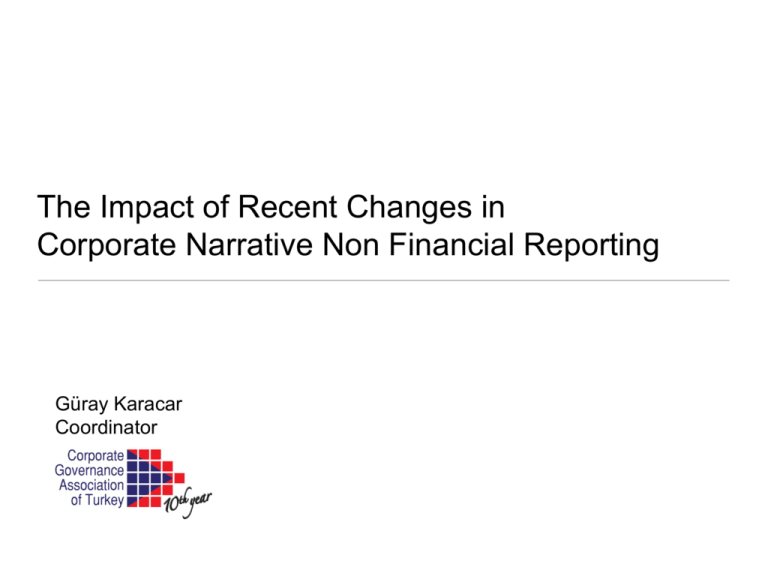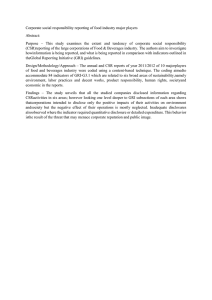5 Guray Karacar - Transparency Disclosure mailing
advertisement

The Impact of Recent Changes in Corporate Narrative Non Financial Reporting Güray Karacar Coordinator Some Observations on Annual Reporting and Financial Reporting • Financial statements are prepared in accordance with the applicable set of accounting standards, and give a fair view of the company’s consolidated assets, liabilities, financial position, and profit or loss. • Annual reports only contains periodical financial information - No strategy - No sincerity - Only success stories and CSR related marketing activities - No value for stakeholders - Top management are not included to the process Non Financial Reporting The primary audience of non-financial reporting is the providers of financial capital (investors), in order to help their capital allocations The expected outcome is; • Better decision-making based on an understanding of, and communication about, the full range of factors that materially affect the ability of an organization to create value over time. • More efficient capital allocation decisions that are more likely to create short, medium and long-term value and to facilitate better alignment of external reporting with internal decision making. Business Model The Impact • More companies reporting on GRI and Integrated Reporting • Top management and engineers are more involved • Sustainability Indexes • ETF’s and funds • Greater demand from investors • New tools to communicate with stakeholders Closing thoughts • The revision of the OECD Corporate Governance Principles is an opportunity to promote reporting • New tools needs to be developed to facilitate the use of reports • Media training needed to educate more on the use of financial and non financial reports • Most of the changes occurred in response to regulation, new legislations has to be in place • Financial institutions do need to consider reports











